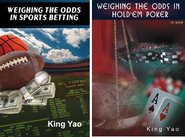Review: The Book, Playing the Percentages in Baseball
By Tango, Lichtman and Dolphin
Other sabermetric books have been written in the last few years, The Book is the best one by far. It is chock full of information, results from research and answers a lot of interesting baseball questions. The three authors, Tom Tango (his blog: http://www.tangotiger.net/), Mitchel Lichtman and Andrew Dolphin have academic backgrounds and work for major league teams as employees or consultants. They use statistical methods to extract and comprehend information from a massive database of baseball games.
For the layman, there may be too much math throughout the book. However, they do a fantastic job of summarizing each idea in plain English at the end of each section. For example, in chapter 2 on hot and cold streaks, after presenting data, explaining their process and interpreting results, they summarize the section with “Knowing that a hitter has been in or is in the midset of a hot or cold streak has little predictive value. Always assume that a player will hit at his projected norm (adjusted for the park, weather, and pitcher he is facing), regardless of how he has performed in the very recent past. A player’s recent history may be used as a tiebreaker.”
Managers, players, fans and the media often put too much emphasis on results from small samples sizes. The authors warn against making this mistake. “One of the pervasive themes of this book is the danger of inferring too much from too little by underestimating the influence of randomness”. For example, they summarize a section on pitcher-batter matchups with: “Knowing a player will face a particular opponent, and given the choice between that player’s 1,500 PA (plate appearances) over the past three years against the rest of the league or twenty-five PA against that particular opponent, look at the 1,500 PA. ”
They aren’t afraid to point out when general baseball wisdom is correct. On starting pitchers, they write, “pitchers perform best with five days of rest, and worst with three days of rest. To manage our entire starting rotation effectively, four days of rest seems to be the optimal point. The current MLB pattern of scheduling the starting rotation works.”
Topics discussed include: clutch hitting, pinch hitting, players’ ability to play to the score, the meaning of individual batter-pitcher matchups, optimal batting orders, starting pitcher’s early inning performance as an indication of latter inning performance, the importance of a save attempt depending on the lead in the late innings, the value of the sacrifice bunt, the value of intentionally walking a hitter, the value of stealing bases, and others.
This book is at the top of my recommendation list for thinking baseball fans. It has a few tidbits that baseball bettors will appreciate.

